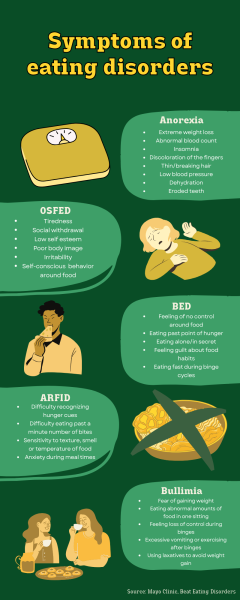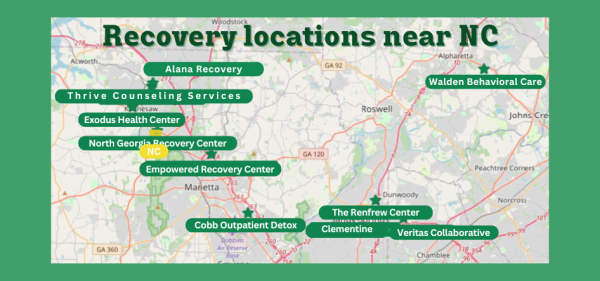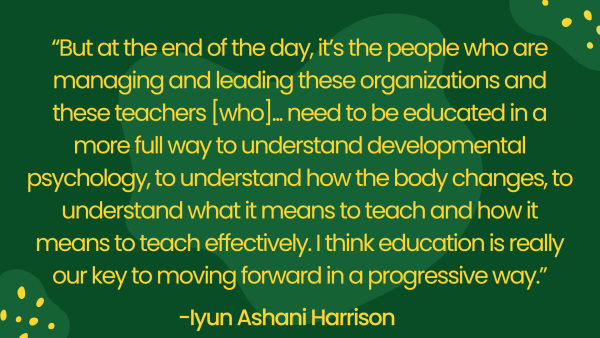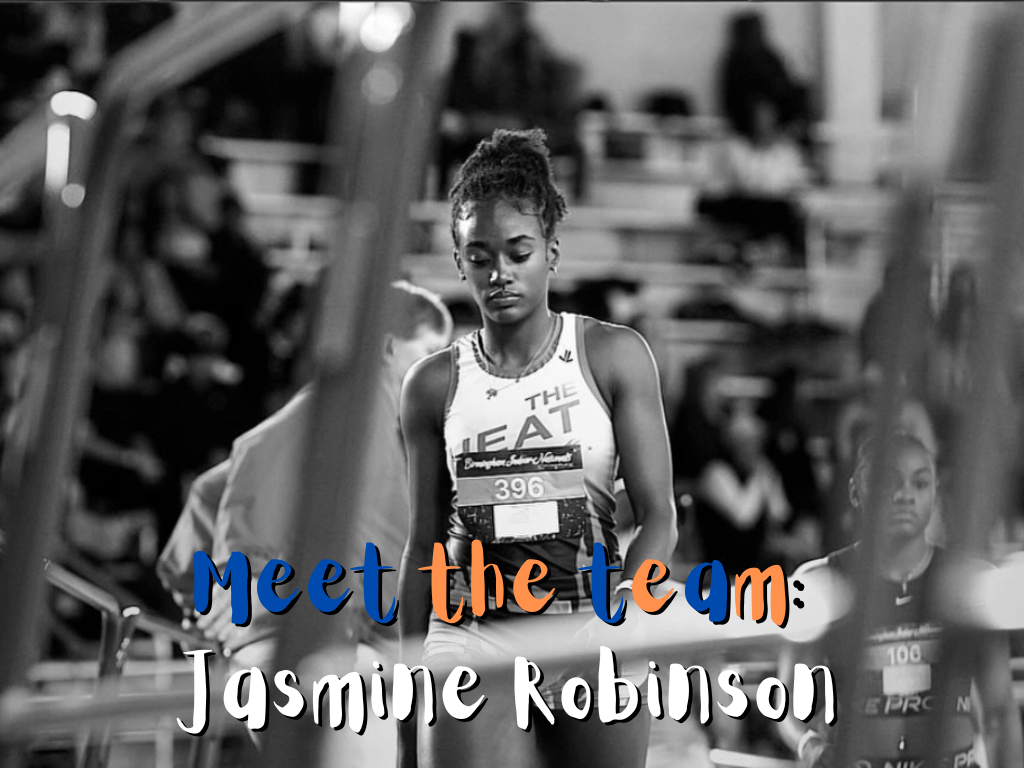Known for its quick partner work and delicate aesthetic, ballet remains stereotyped for lithe and lean dancers. The conventional body image, however, does not trace back to unwarrantable origins. Traditional ballet methods such as the Vaganova technique require thin body shapes and low food intake for the dancers they train, as they believe slender dancers hold desirability. The renown of these standards has led to the rise of disorders in the ballet world, which physically and mentally damage numerous dancers. These dancers, usually, participate in ballet from young adolescence to late teenage years, meaning that anyone from NC or surrounding high schools could fall prey to the harmful ideals ballet exhibits.
“Ballet is one of the most prominent appearance-based sports we see. Thin bodies in ballet have always been valued and encouraged… Most dancers begin when they are very young before their bodies go through puberty. As they grow and their bodies change, these changes can be extremely stressful. Many dancers may not like how their bodies look in the leotards they need to wear, and dancing in front of a mirror may allow them to pick themselves apart and only focus on what they see as imperfections,” The Renfrew Center for Eating Disorders’ Team Lead Gaby DeParis, MS, LAPC, NCC said.
Eating disorders (EDs), defined by the National Institute of Mental Health (NIMH) as a person’s severe disturbance in eating habits, thoughts and emotions, derive from a plethora of causes. Genetics can play a biological factor in the development of an eating disorder, however, a predominant cause lies in the environment that surrounds a person. When faced with relentless negative comments about body preferences, especially during childhood years, the mind begins to shape around the ideals it frequently hears.
These ideals have manifested prominently in ballet classrooms today. The term Thinness-Related Learning (TRL) refers to these remarks from peers and instructors regarding dieting, weight and food restriction, which can cause perfectionistic traits. As teachers may consistently critique dancers’ bodies and encourage them to constantly look in the mirror, dancers can develop a hyper-fixed concentration on thinness. When the fixation remains unaided, EDs may ensue.
Numerous studies have found that dancers, namely ballet dancers, experience a higher quantity of comments about their weight as opposed to their non-dancer counterparts. Among other sports that emphasize thinness, such as figure skating or gymnastics, dancers run three times the chance of developing an ED than their peers. The culmination of perfectionism, critical comments and the obsessive relationship with food produces the unhealthy loom of an ED.
“I don’t think [the stress comes from] just the ballet, it’s the ballet with everything else (school, a job, possible family or friend issues). It also just depends on the teacher and what program you chose. If you just want a couple of classes a week for fun or if you wanna be in a pre-professional program. Some teachers really push you, which, once again, can be stressful if you’re doing it after school because school is mentally exhausting enough,” sophomore Anna Fankhauser.
Common EDs for dancers

Out of the plethora of EDs, dancers predominantly face anorexia nervosa, commonly referred to as anorexia. Characterized by extreme weight loss, fatigue, dizziness and a multitude of other symptoms, this disorder displays the victim’s intense fear of gaining weight. Overall, ballet dancers experience an increased risk of developing anorexia nervosa due to the praise and favoritism that come with a slender body type. As the fear of gaining weight rises in a dancer’s mind, he or she may try numerous ways to limit calorie intake: restricting the amount of food eaten, counting calories or exercising excessively. While dancers with anorexia nervosa may lose weight, they also experience a drainage of energy from the lack of nutrition. In severe cases, there lies a risk of lasting medical conditions such as osteoporosis, kidney failure, mitral valve prolapse and others.
“The thing with eating disorders, particularly anorexia, is that people can be very high functioning even though they are suffering. So, sometimes, it doesn’t show up as an inability to do something. Sometimes it shows up as affecting their mood, affecting their behavior… or they develop challenges socially with people who eat more normally,” Duke University director of undergraduate studies and associate professor of dance Iyun Ashani Harrison said.
Another common ED in the ballet world carries two different names: Other Specified Feeding or Eating Disorders (OSFED) or Eating Disorder Not Otherwise Specified (EDNOS). Serving as an umbrella term for disorders that do not meet the specific criteria of other EDs, OSFED encompasses various atypical eating habits such as purging disorder or Night Time Feeding Syndrome. The high prevalence of this condition sparks its concern, as 14.9% of ballet dancers struggle with a form of OSFED. Symptoms of this disorder can include mood swings, fatigue, difficulty concentrating and secretive behavior regarding food. The Diagnostic and Statistical Manual of Mental Disorders (DSM) coined the EDNOS and OSFED terms to accurately categorize and diagnose EDs, which expanded the horizons for ballet dancers to seek help specific to their struggles.
Less common EDs in ballet
Though dancers typically face EDs such as anorexia or OSFED, other, not-as-common forms of EDs continue to manifest in the lives of dancers. Foremost, bulimia nervosa, commonly referred to as bulimia, does not pose a significantly higher threat to dancers as compared to non-dancer teenagers, yet it remains a severe condition. Bulimia nervosa follows a path of binging and purging cycles, meaning that, first, a person with bulimia nervosa will eat plentiful amounts of food in one sitting. The binging frequently occurs in secret, accompanied by feelings of shame or guilt. Then the purging cycle entails aiming to rid themselves of the food—or essentially, the calories—through unhealthy means such as vomiting or using laxatives. This ED does not focus simply on food: people with bulimia nervosa tend to struggle with their body image and their appearance, leading to a fear of weight gain. Similar to the mindset produced by anorexia, ballerinas may develop this disorder due to fear of gaining weight and becoming less desirable in class in the eyes of ballet instructors.
As a form of reducing calories, dancers may partake in long-term dieting or calorie restriction to maintain a lean figure. While dieting can ensure dancers eat enough protein, healthy fats and vegetables, excessive dieting can lead to Binge Eating Disorder (BED). BED involves a person not feeling in control of what they eat and constantly overeating. Typically, in secret, people with BED may eat past the point of hunger or feel embarrassed about eating. This ED typically results from other mental health disorders and strict dieting, which can increase a person’s craving for food. Unlike bulimia nervosa and anorexia, dancers suffering from BED may not generally fixate on a fear of weight gain, but rather the feeling of control when it comes to mealtimes or eating.
Preventing EDs
Though EDs have taken a detrimental toll on the dance world, the key to creating a healthier environment entails prevention. Studios can introduce educational programs about body and nutrition awareness. Teaching children the importance of fueling their bodies with nourishing food helps prevent the stigma around “good” and “bad” food at an early age.
Additionally, promoting body-positive ballerinas as role models can protect younger dancers from the notion that they must remain thin. The idea that ballet dancers must maintain a thin figure remains unfeasible for certain aspiring ballerinas due to genetics or body type. By publicizing ballerinas of various body shapes and sizes—who still maintain correct technique—the ballet macrocosm will open to numerous dancers with pointe-filled dreams.
Another issue that contributes to the stress of ballet constitutes the ideal that studios believe every dancer who walks through their doors aspires to dance professionally. Ridding dance educators of this belief will result in an enjoyable environment that focuses on learning and pleasure rather than strict rules.
Seeking Recovery
Though preventing EDs remains a reachable goal, numerous dancers currently struggle with disorders. As the ballet community strives to eliminate strict mindsets regarding food and dieting, classrooms can also aim to provide beneficial resources for ballerinas seeking help.
Foremost, encouraging ballerinas to rest can promote healthier practices toward conquering an ED. Instead of overworking their bodies, dancers taking time off can focus on recuperating and recharging their muscles. Additionally, studios promoting support systems through counselors, teachers or other students can provide innate aid within the classroom. Organizations such as the Academy for Eating Disorders, National Eating Disorder Association and National Association of Anorexia Nervosa and Associated Disorders all aim to provide information on EDs, and may potentially help dancers enduring these disorders.
“If you believe you are struggling with an eating disorder, it’s important to seek help right away. Talking to a parent, friend, or trusted adult, whether that be an instructor, a guidance counselor, a teacher, or someone else in your life about what is going on and asking if they can support you in finding treatment can be a helpful first step. You can also call 1-800-RENFREW to learn more about the signs and symptoms of eating disorders, take free quizzes to get a better understanding of your thoughts and feelings around food and whether you have some disordered eating behaviors, and to schedule a free assessment for treatment,” DeParis said.
Though studio-specific help may benefit ballerinas overcoming EDs, seeking professional help remains a valuable step. Around NC, numerous rehabilitation centers exist for the sole purpose of abetting those suffering from EDs. Centers in the metro Atlanta area include Walden Behavioral Care, Alana Recovery Center IOP, The Renfrew Center for Eating Disorders and various other rehabilitation centers, all dedicated to providing intensive care for each patient.

(Addie Hill and My)
From prominent diseases such as anorexia to uncommon ones such as BED, EDs continue to ravage dancers in the ballet world. Due to ballet’s strict standards and social stigmas, ballerinas still struggle with EDs today. However, by talking to a trusted adult, taking time off to rest and seeking professional care, recovery for dancers remains an attainable goal. Little by little, ballet educators have taken steps to create a healthy environment; as classrooms continue through the ages, taking notice of unhealthy mindsets and promoting awareness of nutritious balance for dancers will remain a beneficial way to change the ballet environment for dancers to come.
















